Italy isn’t just a destination: it's a living museum. With every step you take, you're walking through thousands of years of history from Roman emperors to Etruscan kings, from medieval knights to Renaissance thinkers. This is a country where ruins aren't hidden behind glass but integrated into daily life. For history buffs, it’s paradise.

Why Italy is a Must for History Lovers
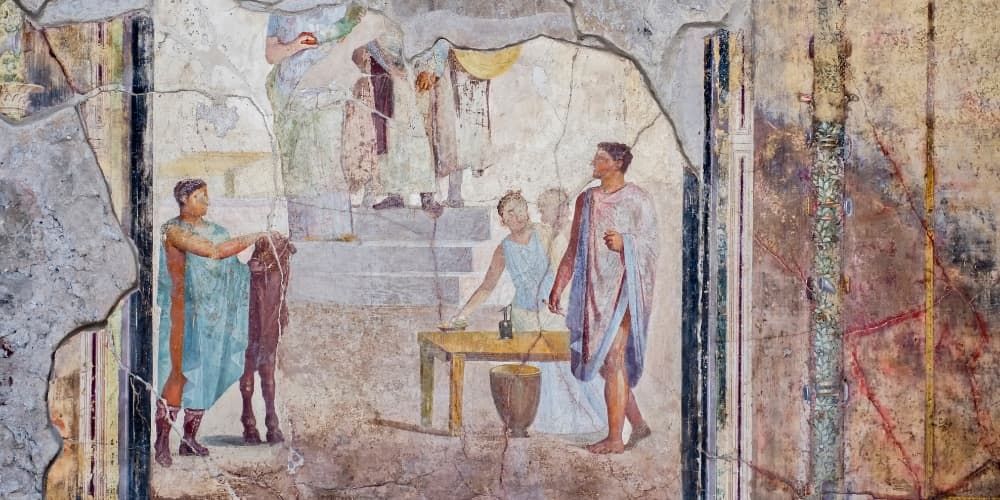
The Italy history travel guide begins not in a book, but in the cobbled streets of Rome, the hilltops of Tuscany, and the sun-soaked coast of Campania.
Whether you’re passionate about archaeology, architecture, or ancient civilizations, Italy offers one of the best historical sites experiences in the world. And what makes it even better? Many of these sites are incredibly well-preserved, immersive, and open to the public, making your journey through time both accessible and unforgettable.
Roman Classics: Colosseum, Pompeii, Ostia Antica
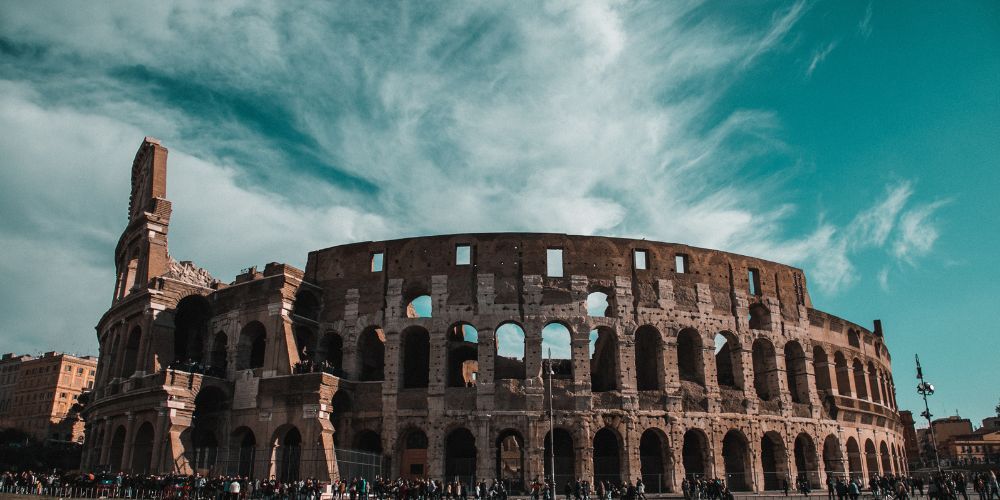
When people imagine ancient ruins in Italy, they almost instinctively think of the Colosseum. This towering amphitheater isn’t just a tourist magnet, it’s a symbol of Roman engineering brilliance, imperial propaganda, and public entertainment on a massive scale. Completed in 80 AD, the Colosseum could hold over 50,000 spectators who came to watch gladiator duels, animal hunts, naval battles, and even public executions.
It was designed with a retractable awning system (the velarium) to shield viewers from the sun, and beneath the arena lay a complex network of tunnels and cages known as the hypogeum.
But the real beauty of the Colosseum experience lies in its storytelling. Walking among the arches, you can almost feel the adrenaline of the crowds and the echo of history. Visit in the early morning or late afternoon for golden light and fewer tourists, or take a moonlit tour for an atmospheric dive into ancient Rome.
Just a few hours south, another Roman marvel awaits: Pompeii. Unlike the Colosseum, Pompeii isn't just a single structure, it's an entire city frozen in time. The eruption of Mount Vesuvius in 79 AD buried the town under ash and pumice, preserving homes, frescoes, marketplaces, and temples with extraordinary detail. You’ll see carbonized loaves in ovens, political slogans painted on walls, and haunting plaster casts of people caught in their final moments.
The sheer intimacy of Pompeii is overwhelming, it’s history not just seen but felt.
For a deeper understanding, visit the House of the Faun, one of the largest private residences in the Roman world, featuring a stunning mosaic of Alexander the Great. Or explore the Lupanare, the city’s ancient brothel, with erotic frescoes that provide insight into Roman social norms. Pompeii is also great for slow travelers, its vastness means you can easily spend a whole day there without retracing your steps.
Yet one of the most underrated Roman ruins is just 30 minutes from Rome itself: Ostia Antica. This ancient harbor town was once a bustling commercial hub, and today it's one of the best-preserved Roman cities in the world. Unlike Pompeii, it wasn't buried in a catastrophe, but slowly faded as the Tiber River silted up and Rome’s importance shifted inland. The result is a sprawling archaeological park where you can wander in peace through baths with intact mosaics, a grand amphitheater, insulae (apartment buildings), bakeries, latrines, and even a bar with a marble countertop still in place.
What makes Ostia special is its atmosphere, less crowded than Pompeii, more interactive than the Forum, and filled with greenery and shade that makes it ideal for a summer visit. It’s a dream for photographers, families, and anyone interested in Roman and Etruscan ruins travel without the heavy foot traffic of other major sites.
A great tip? Combine your Ostia Antica visit with a trip to the nearby beach town of Lido of Ostia for a refreshing dip after a long day among the ruins.
Together, these three sites: Colosseum, Pompeii, and Ostia Antica, form the "golden triangle" of ancient ruins in Italy and are essential highlights in any Italy history travel guide. Each offers a different facet of Roman civilization: political spectacle, domestic life, and urban infrastructure. To experience all three is to time-travel across the soul of an empire.
Etruscan Legacy: Tarquinia, Cerveteri
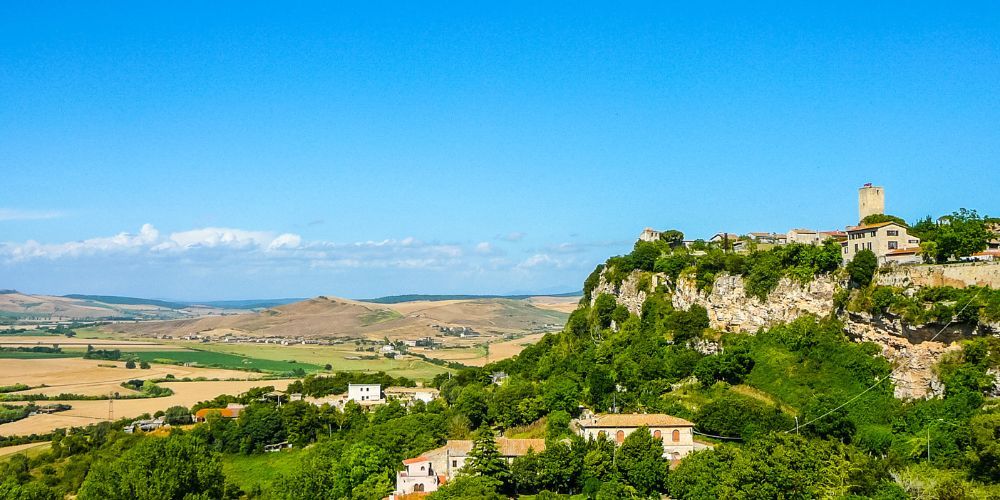
Before Rome rose to dominate the ancient world, the Etruscans were the true rulers of Central Italy. Their civilization, mysterious, artistic, and deeply spiritual, shaped much of what would later become Roman culture, from urban planning to religious rituals. Yet for centuries, the Etruscans remained overshadowed by their Roman successors. Today, however, two sites, Tarquinia and Cerveteri, offer a vivid and emotional window into this fascinating pre-Roman world.
Let’s begin with Tarquinia, a hilltop town in northern Lazio that was once a major Etruscan political and cultural center. Its most famous attraction is the Necropolis of the Monterozzi, a UNESCO World Heritage Site featuring over 200 tombs carved into soft volcanic rock. What makes Tarquinia truly unmissable is its exceptional tomb paintings, scenes of banquets, dancers, musicians, wrestlers, and even mythical creatures, all painted over 2,500 years ago.
These frescoes are rare in the ancient world and offer an unparalleled look into Etruscan beliefs about the afterlife. One of the most famous tombs, the Tomb of the Leopardi, shows a joyful banquet scene, suggesting that death was not feared but celebrated as a passage into a new existence. The imagery reflects a society that valued beauty, festivity, and spiritual depth.
The Nacional museum Tarquiniense, housed in the Renaissance Palazzo Vitelleschi in the town center, complements the necropolis beautifully. Here, you'll find sarcophagi, painted terracotta reliefs, and the striking winged horses of Tarquinia, a unique Etruscan sculpture that hints at the community’s mythological imagination. Don’t miss the chance to explore the charming historic center of Tarquinia as well, with its medieval towers, stone alleys, and panoramic views of the Lazio countryside.
A short drive south takes you to Cerveteri, home to another UNESCO-listed treasure: the Necropolis of the Banditaccia. Unlike the tombs of Tarquinia, which impress through their paintings, Cerveteri stuns with its architecture. Here you’ll walk through a true “city of the dead,” where stone tumuli and cube-shaped tombs are arranged like streets and neighborhoods, reflecting how the Etruscans imagined the afterlife as a continuation of earthly life.
The most famous tomb, the Tomb of the Rilievi, features stucco reliefs depicting everyday objects, helmets, shields, tools, even pillows, carefully arranged to accompany the deceased. It’s an extraordinary example of how deeply the Etruscans thought about what one would need after death. These burial sites are not somber ruins, but spaces brimming with identity and emotion, making them essential in any Italy history travel guide.
Cerveteri also offers a modern visitor center with interactive multimedia exhibitions that help decode the Etruscan worldview, language, and social structure. Kids and families in particular will appreciate the augmented reality reconstructions of the tombs. Nearby, you can also visit the medieval borgo of Cerveteri, still surrounded by ancient walls and full of artisan shops and cozy trattorie.
Exploring Etruscan ruins in Italy is a deeply rewarding experience precisely because it feels off the beaten path. While crowds flock to Roman sites, Tarquinia and Cerveteri offer silence, mystery, and the thrill of discovery. You’ll likely have many moments to yourself, just you, the wind, the stones, and the memory of a people who saw the world through a poetic and symbolic lens.
For Roman and Etruscan ruins travel lovers, these sites are indispensable, not just as historical landmarks, but as key chapters in Italy’s long and layered story. To skip them would be to miss the very roots of Roman greatness.
Greek Sites in the South: Paestum, Segesta
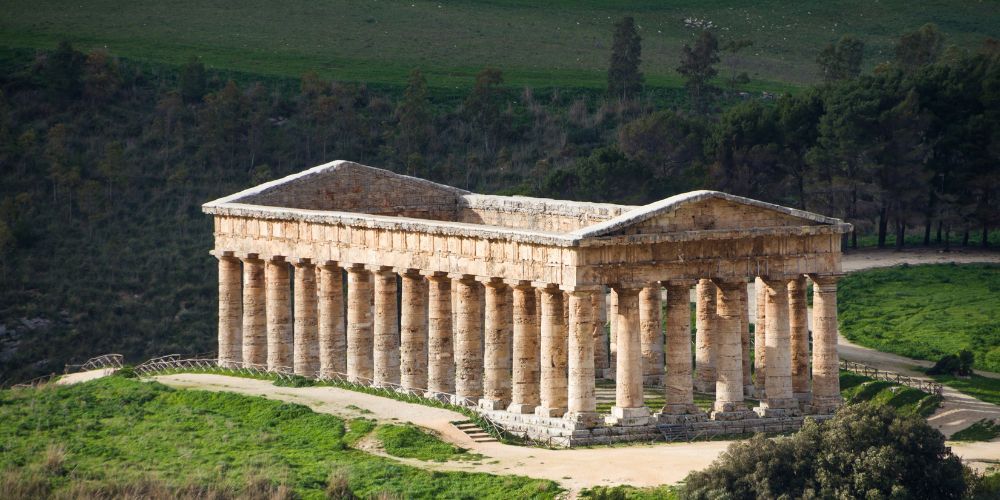
When we think of ancient Greece, we often picture the Acropolis in Athens or the temples of Delphi. But few realize that some of the best historical sites in Italy are, in fact, Greek. Before Rome rose to power, the southern part of the Italian peninsula, along with Sicily, was colonized by Greek settlers in what became known as Magna Graecia. Today, sites like Paestum and Segesta stand as breathtaking reminders of this classical heritage, offering travelers a unique chance to witness authentic Greek architecture without ever leaving Italy.
Let’s start with Paestum, located in Campania just south of the Amalfi Coast. Originally named Poseidonia, this ancient city was founded by Greek colonists around the 6th century BCE and later absorbed into the Roman Empire. Its most striking feature? Three massive Doric temples that are among the best-preserved in the world. The Temple of Hera, the Temple of Athena, and the second Temple of Hera (often mistakenly referred to as the Temple of Neptune) still stand with their fluted columns and harmonious proportions, almost unchanged after 2,500 years.
Walking through Paestum is like stepping into a time capsule of sacred geometry and silent power. The grassy fields, the scent of wildflowers, and the backdrop of blue sky add to the mystical ambiance of the place. These temples offer not just aesthetic pleasure but a spiritual quietude, an echo of the ancient rituals and philosophical depth that shaped the Greek worldview.
But Paestum isn't just temples. The archaeological area also includes a Roman forum, an amphitheater, and painted tombs that reflect the hybridization of Greek and Italic cultures. The Archaeological Museum of Paestum, located just outside the park, houses the famous Tomb of the Diver, a unique fresco representing a man diving into water, likely a metaphor for the soul’s journey to the afterlife. It's the only example of Greek painting from the Classical period found in the West.
Further south, in northwestern Sicily, lies Segesta, a site as dramatic in location as it is in history. Perched on a hill surrounded by rolling countryside, Segesta was founded by the Elymians but heavily influenced by Greek architecture and culture. The Temple of Segesta, built in the late 5th century BCE, is one of the most enigmatic monuments in Italy. Its columns rise from a remote hillside, incomplete yet striking, as the temple was never finished. It lacks a roof and interior cella, but this very incompleteness lends it a haunting beauty.
Segesta also features a Greek theater, set on a panoramic hill with views that stretch to the Gulf of Castellammare. In summer, it hosts open-air classical plays and concerts—an unforgettable experience that marries performance and place in a way only Italy can provide.
Both Paestum and Segesta are key destinations for anyone serious about ancient ruins in Italy. They expand our understanding of the peninsula's past beyond the Roman narrative and introduce us to the spiritual, philosophical, and artistic sensibilities of ancient Greece. In an Italy history travel guide, these sites shine for their uniqueness and emotional resonance.
Travel tip: Paestum is easily reachable by train from Naples and Salerno, making it a perfect day trip from the Amalfi Coast. Segesta, on the other hand, is best accessed by car and pairs beautifully with visits to Erice, Trapani, or the Egadi Islands. Both locations offer stunning natural landscapes that enrich the archaeological experience.
For lovers of Roman and Etruscan ruins travel, adding these Greek gems to the itinerary brings depth, variety, and a broader appreciation of Italy’s ancient soul.
Best Historical Sites Italy: Medieval Castles and Historic Centers
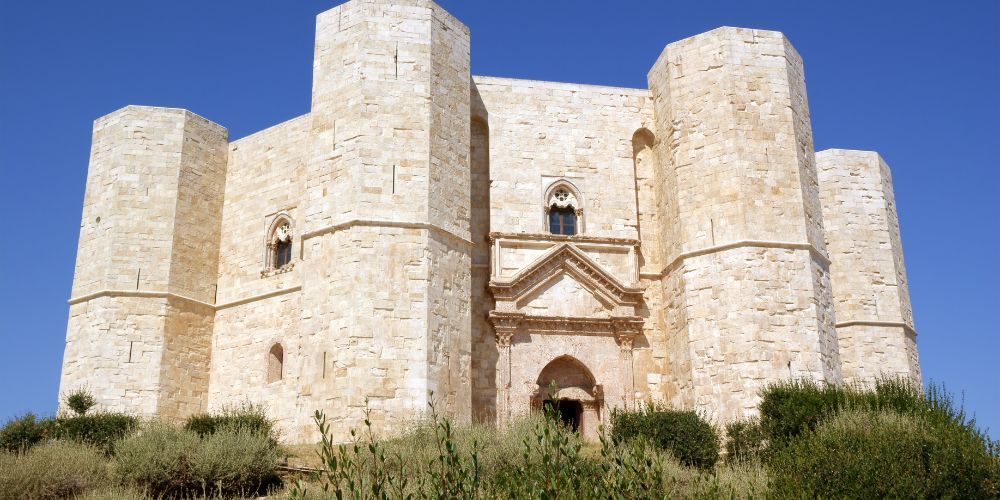
Italy’s ancient history doesn’t end with Romans, Etruscans, or Greeks. In fact, as the centuries marched on, Italy became a patchwork of duchies, republics, and kingdoms, each leaving behind a rich legacy of medieval castles and historic centers. These sites transport travelers to the Middle Ages, a time of knights, fortified towers, stone-paved alleys, and cathedral-dominated skylines. For history lovers, exploring these corners of Italy adds a compelling layer to any Italy history travel guide.
Let’s begin in Tuscany, where time seems to have stopped in cities like San Gimignano. This UNESCO World Heritage Site is often called the "Manhattan of the Middle Ages" for its iconic medieval towers, once symbols of power among rival families. Of the original 72 towers, 14 still stand proudly, casting long shadows over the winding streets. The town’s heart is Piazza della Cisterna, surrounded by noble residences and medieval buildings where frescoes, coats of arms, and family crests tell stories of political alliances, betrayals, and feudal wealth.
Not far away, the Castle of Monteriggioni offers one of the best-preserved examples of a medieval walled village in Europe. Built in the 13th century to protect Siena from Florentine attacks, the circular fortification still encircles the small town entirely. Dante even mentions it in the Divine Comedy, comparing its towers to the giants of Hell. Today, visitors can walk along the ramparts and look out over the Chianti countryside, imagining the clang of armor and the rumble of approaching cavalry.
In the north, Valle d’Aosta is a treasure trove for castle lovers. The region’s strategic position made it a crossroads for trade and conflict, leading to the construction of dozens of castles perched dramatically on rocky outcrops. Don’t miss Fénis Castle, with its fairy-tale layout of towers and crenellated walls. Its courtyard features frescoes depicting Saint George and the dragon, along with intricate medieval symbolism. Then there’s Issogne Castle, with its painted arcades and one of the oldest surviving kitchens in Italy, complete with iron spits, stone ovens, and hanging herbs.
Heading south, the medieval town of Sperlonga in Lazio clings to a cliffside overlooking the Tyrrhenian Sea. While more known for its Roman villa (linked to Emperor Tiberius), its medieval center is a warren of whitewashed houses, staircases, and arches, less known, but just as atmospheric.
Another must-see is Castle of Monte in Puglia, built by Emperor Frederick II in the 13th century. Unlike any other castle in Italy, it’s not a defensive structure but a symbol of knowledge and mystery. Its perfect octagonal design, astronomical alignments, and fusion of Gothic, Islamic, and Classical styles have baffled historians for centuries. Castel del Monte is so unique that it has been recognized by UNESCO and appears on the Italian one-cent euro coin. It’s truly one of the best historical sites Italy has to offer, not only for its beauty but also for its intellectual intrigue.
And what about medieval historic centers? Cities like Assisi, Perugia, Lucca, L'Aquila, and Bergamo Alta still retain the rhythms, sounds, and scents of their medieval roots. Whether you're following the footsteps of St. Francis, sipping wine in a shadowy piazza, or stepping into a Romanesque cathedral lit only by candles, you’re experiencing a slice of Italy that has resisted time’s eroding hand.
These destinations are living history books. Unlike the ruins of earlier civilizations, here you can still touch, taste, and feel the Middle Ages through local festivals, traditional recipes, and even artisan workshops that use ancient techniques to craft ceramics, leather, and iron.
For travelers who’ve already explored ancient ruins in Italy, diving into the medieval chapter offers a sense of continuity. The castles and towns bridge the classical world with the Renaissance, revealing how Italy’s fragmented past shaped its rich and multifaceted identity.
Discover San Gimignano PassBest Museums for Historical Context
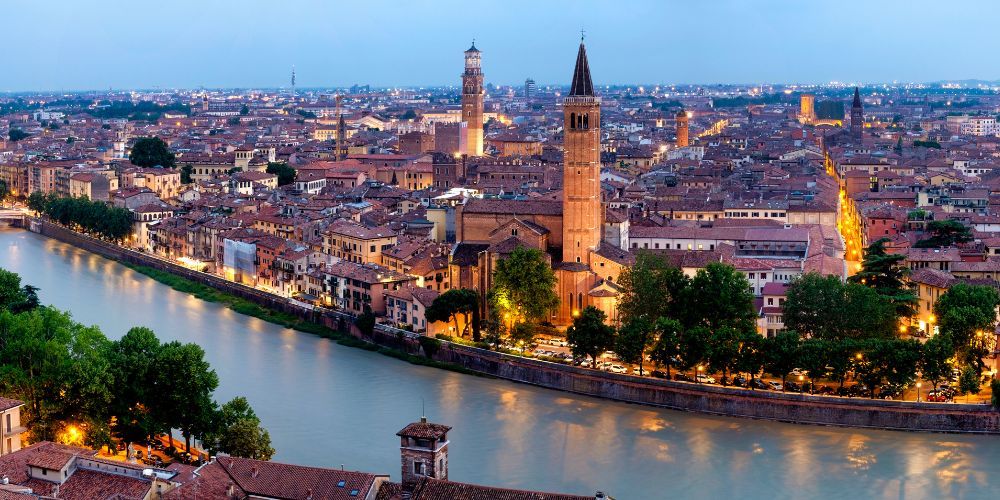
To truly understand the depth of Italian history, from the Etruscan and Roman periods to the Middle Ages and beyond, visiting ruins alone is not enough. It’s in the museums that those fragments of stone, frescoes, and everyday artifacts come to life. The best historical museums in Italy offer not only context but also emotion, turning each visit into a narrative journey that enriches the mind and touches the heart. If you’re planning an itinerary for your Roman and Etruscan ruins travel, these museums are essential stops.
Let’s start in Rome, the eternal capital and beating heart of world archaeology. The National Roman Museum, divided into multiple sites (Palazzo Massimo alle Terme, Baths of Diocletian, Crypta Balbi, and Palazzo Altemps), hosts one of the most extraordinary archaeological collections on the planet. Classical statues like the Resting Boxer, perfectly preserved floor mosaics, jewelry, frescoes, and tools of daily life form a vivid portrait of Roman life. Visiting these collections before or after a tour of the Colosseum or Ostia Antica helps you truly understand who the Romans were and how they lived.
In Tarquinia, in the heart of ancient Etruria, you’ll find the National Museum of Tarquinia housed in Palazzo Vitelleschi, a Renaissance gem that contains the best of Etruscan art and culture. The painted tombs of Tarquinia, with their scenes of banquets, dances, and funerary games, find their completion here: cinerary urns, terracotta sarcophagi, and an incredible collection of ritual objects that make the Etruscan people feel surprisingly present, almost close. An absolute must for anyone following an Italy history travel guide focused on the pre-Roman era.
Heading south, just steps from the ruins of Paestum, is the National Archaeological Museum of Paestum. Small but powerful, this museum houses artifacts from Greek colonies and, most notably, the famous Tomb of the Diver, a fifth-century BC fresco that delicately portrays the transition from life to death. It is an icon of Greek funerary art in the western Mediterranean and enhances the visual experience of the nearby Doric temples. This is an essential stop for anyone wanting to deepen their knowledge of the ancient ruins in Italy of Greek origin.
Another fundamental place is the Regional Archaeological Museum of Palermo, which preserves artifacts from Segesta, Selinunte, and other Greek colonies in Sicily. Here you can grasp the cultural power of Magna Graecia, among sculpted pediments, black and red ceramics, and temple decorations. The museum path allows you to appreciate the fusion of Greek aesthetics with local techniques, ideal for expanding the vision of those exploring southern Italy.
But that’s not all. If you’re passionate about the Middle Ages and the Renaissance, you can’t miss the Uffizi Gallery in Florence, where history, art, and power intertwine in portraits of popes, warlords, and nobles. Or the Castelvecchio Museum in Verona, which houses weapons, Gothic sculptures, and frescoes from medieval Veronese churches. In these museums, history can be touched and closely observed, fitting perfectly between visits to castles, historic centers, and ancient ruins.
For those seeking a comprehensive view of the entire arc of Italian history, we strongly recommend the Museum of Roman Civilization (currently being reopened in Rome), where scale models, dioramas, and reconstructions help adults and children visualize the urban and social evolution of the Roman Empire.
In conclusion, no trip among the best historical sites Italy can be considered complete without a visit to one or more museums. They give voice to the artifacts, transform stones into stories, and offer valuable interpretive tools to read the signs of the past during every visit to the ruins. They are the beating heart of any Italy history travel guide designed for those who don’t just want to “see,” but truly want to understand.
Discover the Rome PassTips for guided tours and when to go: your Italy History Travel Guide
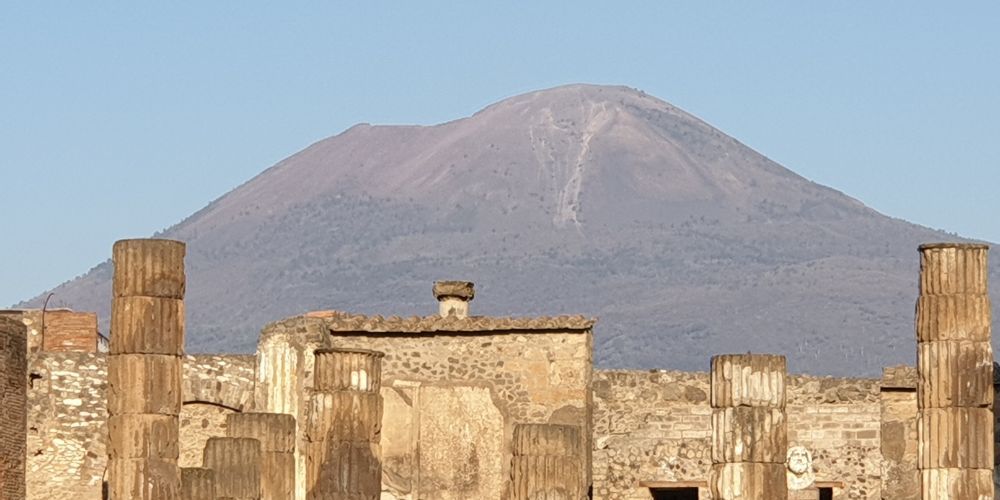
Planning a journey through Italy’s historical treasures can feel overwhelming: too many things to see, too much beauty to absorb, and centuries of history to understand. That’s why having a well-crafted Italy history travel guide, with practical tips on guided tours and the best times to visit, can turn your trip from a simple vacation into a transformative experience.
Why choose a guided tour?
Many travelers ask themselves: is booking a guide really necessary? For history lovers, the answer is almost always yes. The ancient ruins in Italy, from Greek temples to Etruscan necropolises, don’t reveal their full story at first glance. Without context, many stones just look like... stones. But with a knowledgeable guide (preferably an archaeologist or art historian), every detail comes to life: you’ll understand why a wall is tilted, how a Roman sewage system worked, or what a painting inside an Etruscan tomb truly meant.
Most major sites offer official guided tours, but you can also book certified local guides (accredited by regional authorities) or join small private tours tailored to your interests. Thematic tours are also available: for instance, itineraries dedicated exclusively to Etruscan heritage, or urban walks through medieval towns that reveal the hidden stories behind gates, coats of arms, or stone inscriptions.
If you're traveling with children, consider experiential tours: theatrical walks, archaeological workshops, or treasure hunts among the ruins. The Archaeological Museum of Naples, for example, organizes “interactive” activities that captivate kids and turn history into play.
When is the best time to visit?
The time of year you choose to visit Italy can greatly impact your experience. If your goal is to explore the best historical sites Italy in peace, we strongly recommend avoiding peak season (July and August). Besides the intense heat, which can make walking among ancient stones exhausting, the most famous sites, like the Colosseum or Pompeii, are often overcrowded.
The ideal months?
April, May, September, and October. The light is softer, the colors warmer, and the atmosphere far less chaotic. It’s the perfect time for unforgettable photos, engaging conversations with guides, and quiet moments of reflection among the ruins.
Many archaeological sites also offer evening tours during the summer. Visiting the Roman Forum or Herculaneum at sunset, enhanced by lighting effects and artistic performances, creates a unique, emotional experience, even for seasoned travelers.
Booking and entry tips
For top attractions, like the Colosseum, Pompeii, or the Uffizi Gallery, advance booking is essential. Many tickets now include digital guide access or the option to join a guided tour. We recommend checking official websites or relying on certified tour operators. The Visit Italy app also offers itinerary suggestions and access options for every historical stop.
Don’t overlook city cards: tourist passes such as the Roma Pass or the Florence Pass include skip-the-line access to museums and archaeological sites, and often guided tour options. They’re ideal for those planning a history-packed itinerary.
What about off-the-beaten-path history?
While most travelers stick to the classics, Italy is filled with lesser-known historical sites that are just as remarkable and far less crowded: forgotten Etruscan tombs, cliffside medieval castles, cave monasteries hidden in the Apennines.
To discover these hidden gems, turn to local guides or cultural associations. They often organize visits by reservation only, sharing stories and insights you won’t find in traditional guidebooks.
Discover the Florence PassFAQ about Must-See Ancient Ruins and Historical Sites
What are the top ancient ruins to visit in Italy?
The most iconic ancient ruins include the Colosseum, Pompeii, Ostia Antica, Paestum, Segesta, Tarquinia, and Cerveteri. Each site offers a unique window into different civilizations: Roman, Greek, and Etruscan.
Are there Roman ruins outside of Rome?
Absolutely. While Rome is central, incredible Roman ruins can be found in Pompeii, Herculaneum, Ostia Antica, Verona, and even the north of Italy in places like Aquileia.
Can you visit Pompeii without a guide?
Yes, Pompeii is open for self-guided visits, and maps are available. However, a guided tour significantly enhances the experience, offering deep insights into daily Roman life, architecture, and history.
About the author
Written on 10/07/2025

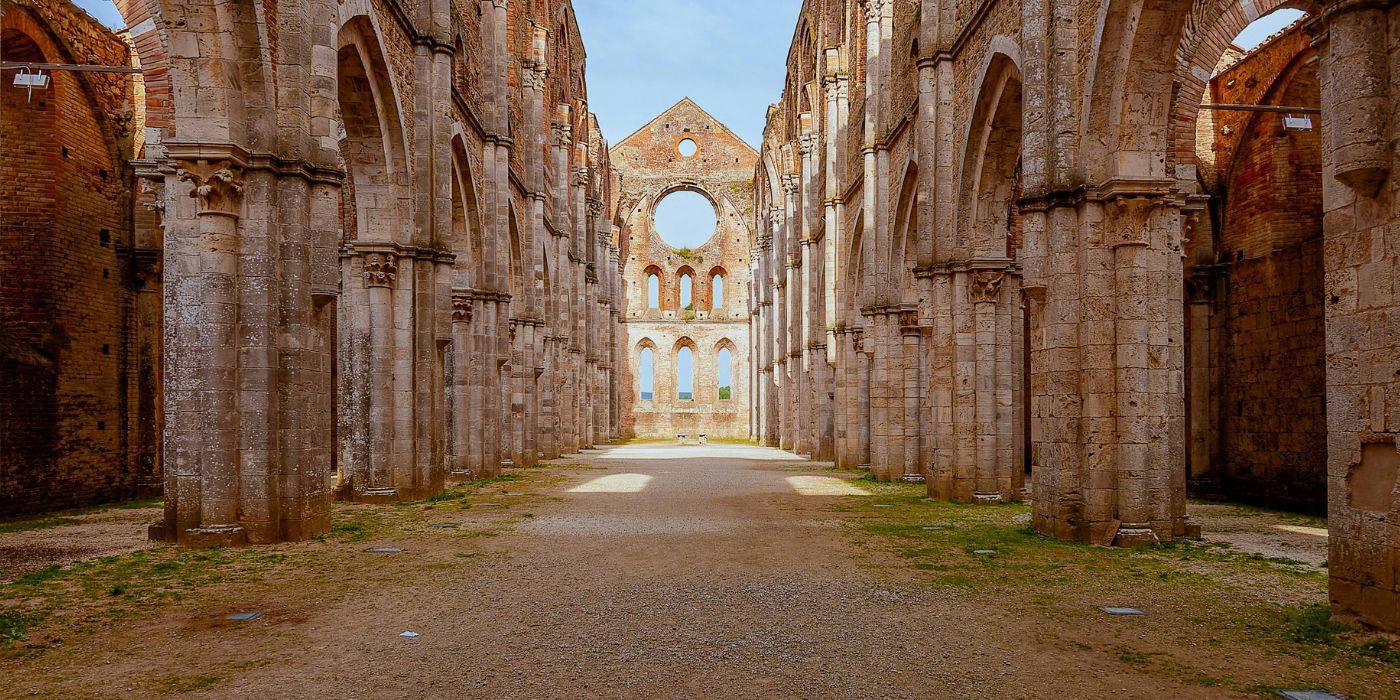

Alessia Coppola
Travel through the most fascinating archaeological sites, museums, and useful tips on when and how to visit them. For curious travelers.